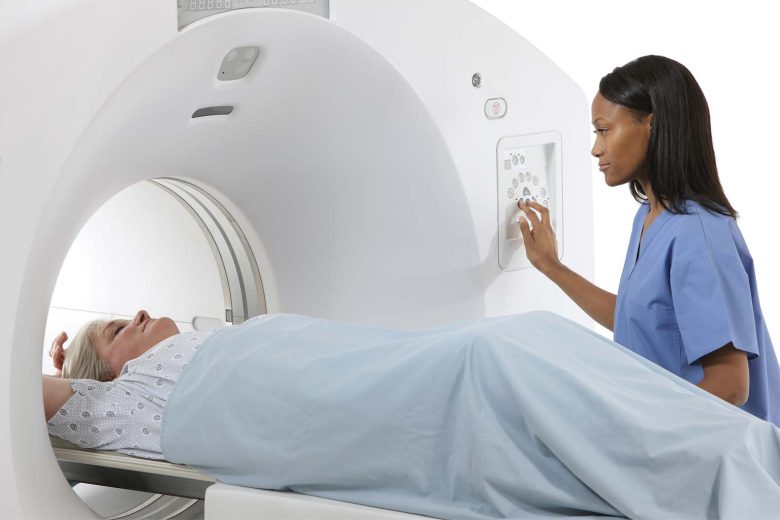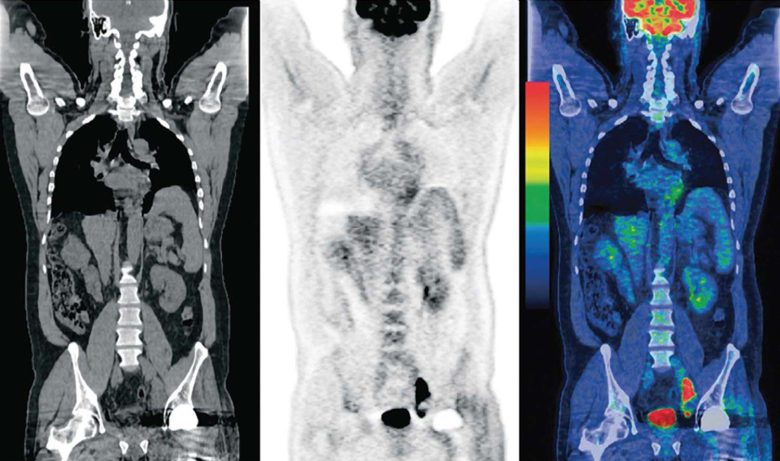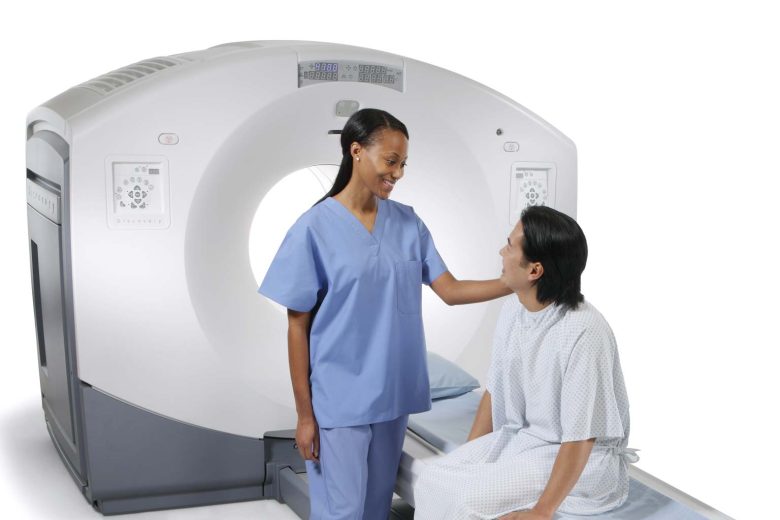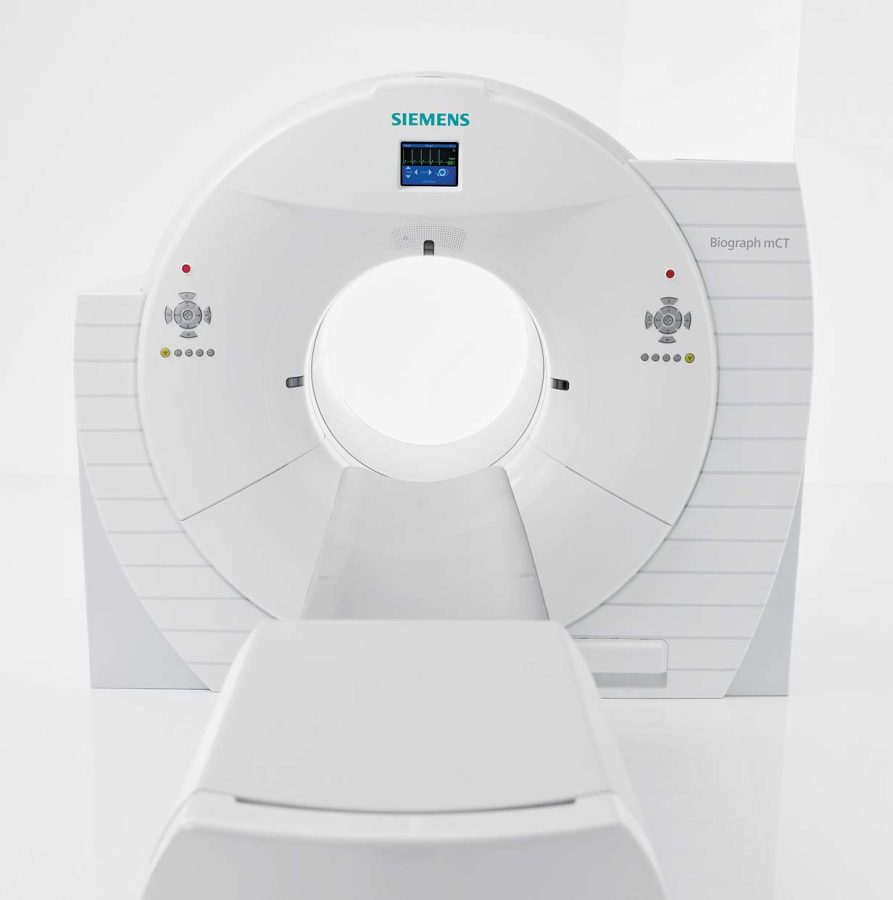 What is PET/CT?
What is PET/CT?
Patients at Akumin have access to advanced Positron Emission Tomography (PET) and Computed Tomography (CT) technology in a single, seamless exam. A PET/CT scan combines these two imaging methods into one session, showing both the metabolic activity of cells and the precise anatomical location of abnormalities — giving physicians a more complete picture to guide care.
By performing PET and CT together, Akumin helps save patients time, avoids the need for multiple appointments, and delivers a more comprehensive and accurate diagnosis.
 How PET/CT Works
How PET/CT Works
- PET Scan: Uses a small amount of safe, radioactive tracer to highlight areas of increased cellular activity. Cancer cells absorb more of the tracer, which appear as bright spots on the scan.
- CT Scan: Produces detailed cross-sectional images of your body, revealing the size, shape, and location of suspicious areas.
When these images are combined, they create a single, highly detailed result that shows what is happening inside the body and exactly where it is happening, enabling more confident treatment decisions.
PET/CT for Cancer Care
PET/CT is one of the most important tools in oncology, and Akumin uses it to:
- Detect cancer at an early stage
- Distinguish between benign and malignant growths
- Pinpoint where cancer is located in the body
- Determine whether cancer has spread (staging)
- Monitor how well treatment is working
- Check for recurrence after treatment
 PET/CT for Prostate Cancer
PET/CT for Prostate Cancer
Akumin offers PSMA PET/CT, a major advance in imaging that targets a protein found on prostate cancer cells. This technology can:
- Detect prostate cancer that may not appear on conventional imaging
- Determine whether the disease has spread outside the prostate
- Guide treatment planning, including surgery, radiation therapy, or systemic therapy
- Monitor treatment response and check for recurrence
Other Conditions PET/CT Can Detect
Beyond oncology, PET/CT imaging is valuable for:
- Cardiology: Assessing blood flow, heart muscle health, and damage after a heart attack
- Neurology: Evaluating brain disorders such as Alzheimer’s disease, epilepsy, and other neurological conditions
 Benefits of PET/CT at Akumin
Benefits of PET/CT at Akumin
When patients choose Akumin for PET/CT imaging, they benefit from:
- Comprehensive Results: Functional and anatomical images in one scan
- Single Session Convenience: PET and CT performed together
- Minimally Invasive Testing: Only a small tracer injection is needed
- Reduced Need for Additional Testing: Fewer follow-up scans or biopsies
- Better Treatment Decisions: Detailed results that help physicians choose the best therapy
 What to Expect During a PET/CT Exam
What to Expect During a PET/CT Exam
- Preparation: Patients may be asked to fast for several hours. The Akumin care team provides clear instructions before the scan.
- Tracer Injection: A small amount of radiotracer is injected, followed by a rest period while it circulates.
- The Scan: Patients lie on a comfortable table that moves through the scanner. The scan itself usually takes 30–60 minutes.
- After the Exam: Normal activities can be resumed, and patients are encouraged to drink water to help flush the tracer from the body.
Advanced Technology, Exceptional Care
Akumin uses the latest PET/CT technology to deliver high-resolution images and accurate results. This helps physicians detect disease earlier, plan treatment precisely, and monitor progress over time — all while prioritizing patient comfort and experience.
Frequently Asked Questions (FAQ)›
A PET/CT scan combines two imaging tests — positron emission tomography (PET) and computed tomography (CT) — in one session to give doctors both metabolic and anatomical information.
A small amount of radioactive tracer is injected, then a PET scan detects areas of high cellular activity while the CT scan shows detailed anatomy. The images are combined for a complete view.
You’ll lie on a table that moves through the scanner. The exam is painless and usually takes 30–60 minutes after a short prep period.
You may be asked to fast for several hours and avoid strenuous activity before the scan. Your care team will give you exact instructions.
Yes. The tracer contains a very small amount of radiation that leaves the body quickly. The exposure is similar to other imaging tests.
Most results are available within 24–48 hours. Your physician will review them with you and discuss next steps.
Yes. PSMA PET/CT is one of the most accurate ways to detect and stage prostate cancer and guide treatment planning.
A CT scan shows anatomy only. PET/CT adds metabolic information, helping doctors see how tissue is functioning, not just what it looks like.
It provides more accurate information in a single session, helps avoid unnecessary biopsies, and supports better treatment planning.
Yes, when medically necessary. Most insurance plans also cover PET/CT. Coverage will be confirmed before your appointment.